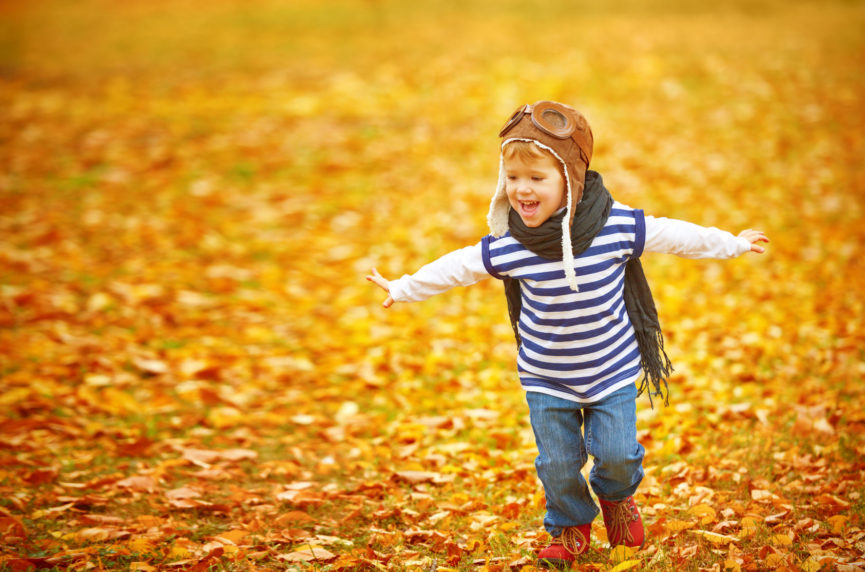The Things We Lost – Rediscover Your Childlike Wonder…
Recall that feeling when, after believing that you had lost something forever, you come across it some days, weeks, or months later…
Maybe it was the earring that turned up under the couch cushion? An old Photo? We have all had those moments of surprise when, having written something off as gone-for-good, the object reappeared and we felt a surge of joy and gratitude.
As we grow older and life’s routine begins to create a tedium that dulls our experiences, many of us find that we have lost something that was once an integral part of who we were.
As children, we were captivated by the world around us…
Something as simple as a lick from the family dog could fill us with joy as we were sent into fits of laughter. At some point, our ego began to run the show. It demanded that we “get serious” and “focus up”—we had work to do and it was time to put away childish things.
So, we got to it and let go of that part of ourselves that saw the world with childlike wonder. For something to surprise us anymore, it had to be extraordinary!
Finding Joy Again
Many of us feel the separation; we recognize that we have lost something important. Yet, we can still feel the pulse of it: like if we just dove a little deeper we would rediscover it; if the noise was turned down a bit, we could hear its familiar call.
Mindfulness offers us a way to respond to this longing, allows us to return to the familiar way of being that we embraced as children.
As we choose to notice the world around us and its many subtle layers, we can’t help but be moved by the profundity of it all. Joy wells up in response to the things we had grown accustomed to: the gentle breeze on our skin, the taste of a ripe tomato, the sound of birds up in their leafy perches.
We begin to realize that there are as many paths for practicing mindfulness as there are distractions to keep us from doing so.
The Six Paths of Practice
Each path offers a unique entry point and can lead us deeper into our experiences.
Environmental. Using our senses we make contact with environmental stimuli. Choose to slow down and notice tastes, sounds, feelings, and sights, a world of wonder unfolds.
Cognitive. We often let our thoughts run on autopilot. Yet, we can choose to observe them like train cars rolling by. When we do so, we begin to realize that our thoughts are often not based in reality, but rather, built on a set of poorly constructed beliefs and assumptions. As we bring mindfulness to the equation, we see the world as it is, unadulterated by our commentaries, labels, and judgments.
Somatic. Our bodies offer a virtual playground for exploration. Movement and energetic sensations, when we are mindful of them, provide us with a way to explore areas where we have accumulated stagnation or tightness, often the result of old emotional wounding and traumas. Turning towards these aspects of our bodies with mindfulness, we can begin the process of transformation and healing.
Emotional. Our emotions are teachers when we choose to pay attention to them, rather than bury them under a myriad of distractions. We can open up to our emotions and even welcome them. By doing so with mindfulness, we notice the layers, the places they show up in our body. We can work with and resolve the painful ones more efficiently, and enjoy the positive ones on a deeper level.
Transpersonal. Mindfulness is a great tool for cultivating space for transpersonal (beyond ego) states, as well as for navigating them. Though sometimes these states surprise us—born from something beyond our control—with mindfulness, we can intentionally explore the unconscious, which is often a door into transpersonal realms. When we choose to integrate these experiences, we are transformed.
Relational. As we learn to be mindful of our interaction with the world around us, we begin to notice the impact we have on others. One of the greatest benefits of mindfulness is that it helps us slow down and realize there are little spaces within our interactions where we can pause. We don’t have to react automatically. Instead, we can practice being still for a moment, noticing our inner response, and then choosing our actions. The result is that we are often kinder, slower to anger, better listeners, and more appreciative of others.
Reclaiming Joy & Surprise
There is a world of joy and surprise to be found in the very places we have been looking all along. By working with the six paths of practice we cultivate a way of experiencing these places more fully. Mindfulness allows us to relocate a certain quality we possessed as children—a quality that helps us experience the world as it is: a wondrous adventure.
